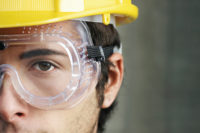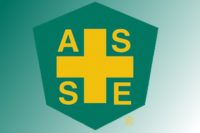Communication is defined as a connection between two beings. Whether it be ordering at a fast food drive-through, or a healthy debate between friends on why your sports team is the best, prior knowledge and clear communication are key in understanding others.
This need for clarity is no different in the world of fall protection. In order for safety managers, engineers, manufacturers and end users in the fall protection world to communicate with one another, a standard for definitions and nomenclature with which to communicate is essential.
Throughout my 12 years in the fall protection industry I have seen firsthand the importance of definitions and nomenclature. Each time a fall protection product helped send a worker home safely to their loved ones, definitions and nomenclature has played a key role.
The ANSI/ASSE Z359.0-2012 standard “Definitions and Nomenclature Used for Fall Protection and Fall Arrest” standard establishes the clear definitions and nomenclature used for the entire Z359 Fall Protection Code. Whether you are a safety manager, engineer, manufacturer or end user, the ANSI/ASSE Z359.0-2012 standard gives professionals a common resource for definitions and nomenclature used in all of the Z359 standards. This standardization eliminates miscommunication and enhances clarity between parties.
Hierarchy of fall protection
One of the most important parts in understanding fall protection is to know and apply the hierarchy of fall protection. Throughout each level, the ANSI/ASSE Z359.0-2012 standard provides distinct definitions. The fall protection hierarchy consists of the following levels:
- Elimination
- Passive Fall Protection
- Fall Restraint
- Fall Arrest
- Administrative Controls
In every level of the hierarchy there are means and methods to carry out each action. For example, “fall arrest” in most instances requires fall protection equipment. The equipment, in most cases, is designed by an engineer who follows parameters that are based on definitions and nomenclature. The manufacturer then makes the equipment using a specific set of requirements. If the equipment is ANSI/ASSE Z359 compliant, the different ANSI/ASSE standards that the engineer and manufacturer follow to produce the equipment use terms and nomenclature that are defined in the ANSI/ASSE Z359.0-2012 standard.
When the safety manager buys the equipment from the manufacturer, he or she needs to know how the equipment will perform. This performance is dependent on both the engineer’s design and the manufacturer’s construction.
When a safety manager is buying fall protection equipment for their company, they can look to the ANSI/ASSE Z359.0-2012 standard for guidance on what a manufacturer means when they say “free fall distance” or “activation distance.” Let’s face it; fall protection is technical. Unless you deal with fall protection on a regular basis, it can be difficult to remember and understand every detail. Whether it is analyzing a blueprint for a fall protection system, reading an equipment test report from a test lab, or talking to a safety manager about a fall hazard, the ANSI/ASSE Z359.0-2012 standard acts as a backbone.
OSHA’s walking-working surfaces standard
There has been much buzz within the safety world regarding the new OSHA29 CFD Subpart D revision of its general industry standards for walking - working surfaces. OSHA estimates implementation of the new rule will result in preventing close to 30 fatalities per year.
With compliance comes understanding. The new OSHA rule has referenced the ANSI/ASSE Z359.0-2012 standard multiple times, providing universal definitions and nomenclature. To maintain compliance and keep employees safe, affected industries across the U.S. will now have to use the ANSI/ASSE Z359.0-2012 standard for guidance in understanding terms and nomenclature within the revised OSHA 29 CFD Subpart D rule.
From an engineer’s standpoint, the adoption of ANSI/ASSE Z359.0-2012 standard within the revised OSHA 29 CFD Subpart D makes life much easier. Across the industry, people have invented words and terminology to describe fall protection concepts and products. This is extremely dangerous because only the speaker grasps full knowledge of his/her intent. I’ve seen this happen on many occasions. Implementation of the ANSI/ASSE Z359.0-2012 standard won’t stop muddled communication overnight, but the revised OSHA rule coming will most certainly create a common language industry-wide.
In the real estate world everyone knows it’s about location, location, location. In the fall protection world, it should be all about communication, communication, communication. This communication must occur in a standard fashion between all professionals throughout every step of the process. Use of the ANSI/ASSE Z359.0-2012 standard will provide that clear and concise verbiage.



